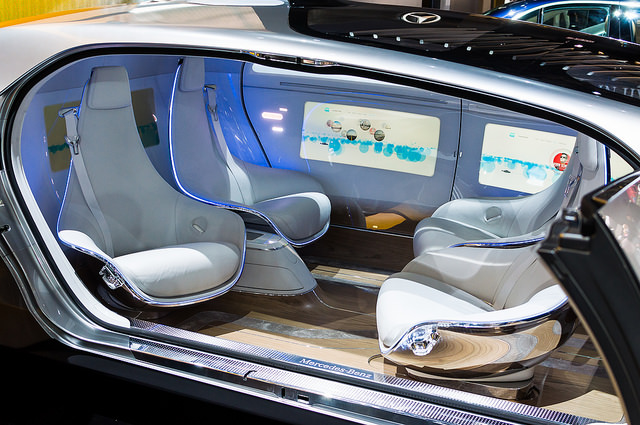On first glance, the California Department of Motor Vehicles' recent proposal to ban the testing and deployment of driverless cars seems to err on the side of caution.
On closer inspection, however, the DMV's draft rules on autonomous vehicles rest on flawed assumptions and threaten to slow innovation that might otherwise bring enormous, time-critical societal benefits.
At issue is the requirement that DMV-certified "autonomous vehicle operators" are "required to be present inside the vehicle and be capable of taking control in the event of a technology failure or other emergency." In other words, driverless cars will not be allowed on California roads for the foreseeable future.
One problem with the human operator requirement is that it mandates a faulty design constraint. As Donald Norman, the technology usability design expert, has noted, decades of scientific research and experience demonstrate "people are incapable of monitoring something for long periods and then taking control when an emergency arises."
This has been Google's direct experience with its self-driving car prototypes, too. As Astro Teller, head of Google[x], told a SXSW audience in early 2015: "Even though people had sworn up and down, 'I"m going to pay so much attention,' people do really stupid stuff when they're driving. The assumption that humans could be a reliable back up for the system was a total fallacy!"
The ramifications are more than just theoretical or technical. The lives and quality of life of millions hang in the balance.
Americans were in more than six million car crashes last year, injuring 2.3 million people and killing 32,675. Worldwide, more than 50 million people were injured, and more than one million were killed. Human error caused more than 90% of those crashes.
It remains unclear whether semi-autonomous or driverless cars would better reduce human error and lower this carnage. Thus, it is important to encourage multiple approaches toward safer cars -- as quickly as possible. Instead, California has slammed the brakes on the driverless approach.
Another major problem with the human-operator mandate is that it slows testing and development of systems aimed at providing affordable transportation to the elderly, handicapped or economically disadvantaged. Millions of Americans either cannot drive or cannot afford a car. This hurts their quality of life and livelihood.
Driverless cars could enable Uber-like, door-to-door mobility-on-demand services at a fraction of today's transportation cost. This will require, however, efficient, low-cost vehicles that do not need (nor need to accommodate) relatively expensive human drivers. It also requires empty driverless cars to shuttle between passengers. The California DMV rules, as proposed, would not allow the testing or deployment of such vehicles or fleet services.
The immediate victim of California's proposed rules is Google. Google's self-driving car program is the furthest along in the driverless design approach that the new rules would rein in, and its current efforts are located around its headquarters in Mountain View, CA. Google's attempt to field a fleet of prototype driverless cars (without steering wheels) would certainly be dashed.
Other companies' efforts might be affected, too. Will Tesla owners, for example, need to get separate DMV certification to use enhanced versions of Tesla's autopilot feature? How about GM owners with Super Cruise-equipped cars? How will these rules affect Apple's car aspirations?
The longer-term victim is California.
Silicon Valley is becoming the epicenter of autonomous vehicle research. Not only are native companies like Google, Tesla and, reportedly, Apple investing heavily in this arena, but the race to develop the technology has compelled numerous traditional automakers to build their own Silicon Valley research centers.
If California regulators limit on-road testing and deployment, companies stretching the boundaries of driverless technology will inevitably shift their investments to more innovation-friendly states (or countries).
The proposed rules must now go through several months of public comment and review before they are finalized. California needs to take that opportunity to reconsider its course on driverless cars.





